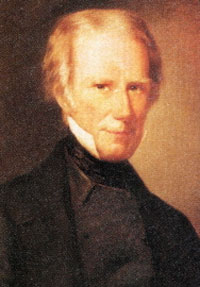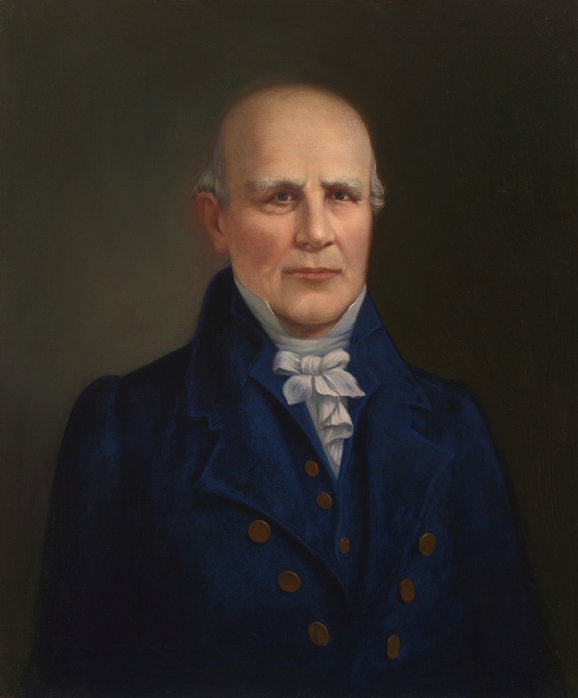
Elections to the United States House of Representatives for the 18th Congress were held at different dates in each state between July 1, 1822 and August 14, 1823 during James Monroe's second term in office. This was the first election based on the results of the 1820 Census, which added a total of 26 seats to the House. Four states lost one seat each, while nine states gained anywhere between one and eight seats.

Elections to the United States House of Representatives for the 17th Congress took place in the various states between July 3, 1820 (Louisiana) and August 10, 1821 (Tennessee). In four states the election coincided with the taking of the 4th Census. Future enumerations would henceforth be held at a different time of year.

Elections to the United States House of Representatives for the 11th Congress were held in the various states between April 1808 and May 1809. The Congress first met on May 22, 1809.

Elections to the United States House of Representatives for the 7th Congress in 1800 and 1801, at the same time as the 1800 presidential election, in which Vice President Thomas Jefferson, a Democratic Republican, defeated incumbent President John Adams, a Federalist.
The United States Senate elections of 1808 and 1809 were elections that had the Federalist Party gain one seat in the United States Senate, and which coincided with the 1808 presidential election. The Federalists had gone into the elections with such a small share of Senate seats that even if they had won every election, they would have still remained a minority caucus.
The United States Senate elections of 1852 and 1853 were elections which had the Democratic Party gain two seats in the United States Senate, and which coincided with the 1852 presidential election. Only six of the twenty Senators up for election were re-elected.

The United States Senate elections of 1858 and 1859 were elections which had the Republican Party gain five additional seats in the United States Senate, but the Democrats retained their majority. That majority would erode in 1860 with the secession of the southern states leading up to the Civil War. In Illinois, incumbent Stephen A. Douglas (D) and challenger Abraham Lincoln (R) held a series of seven debates, known as the "Lincoln–Douglas debates."
In the United States Senate elections of 1870 and 1871, the Republican Party lost five seats in the United States Senate, though it still retained an overwhelming majority. In advance of these elections, the last four seceded states were readmitted to the Senate.
The United States Senate elections of 1872 and 1873 were elections which had the Republican Party, while still retaining a commanding majority, lose two seats in the United States Senate. By the beginning of the Congress, however, they'd lost three more: two as defections to the Liberal Republican Party, and one a resignation of Henry Wilson to become U.S. Vice President. These elections also coincided with President Ulysses S. Grant's easy re-election.
The United States Senate elections of 1876 and 1877 had the Democratic Party gain five seats in the United States Senate, and coincided with Rutherford B. Hayes's narrow election as President. Republicans remained in the majority, however.
The United States Senate elections of 1886 and 1887 were elections that had the Republican Party lose two seats in the United States Senate. At the beginning of the 50th Congress, therefore, Republicans had the slimmest possible majority due to a vacant Democratic seat: 38 out of 75 seats. Once that vacancy was filled, Republicans maintained control as the single Readjuster Senator caucused with them.
The United States Senate elections of 1814 and 1815 were elections that had the Democratic-Republican Party lose a seat but still retain an overwhelming majority in the United States Senate. Unlike in recent elections, the minority Federalists had gone into the elections with a chance of regaining their long-lost majority had they swept almost all the seats. However, only one seat switched parties. Two seats held by Democratic-Republicans were left unfilled until long after the next Congress began.
The United States Senate elections of 1816 and 1817 were elections for the United States Senate that had the Democratic-Republican Party gain a net of two seats from the admission of a new state, and which coincided with the presidential election.
The United States Senate elections of 1818 and 1819 were elections for the United States Senate that had the Democratic-Republican Party gain two seats. The Federalists had only three seats being contested, of which they lost two and the third was left vacant due to a failure to elect.
The United States Senate elections of 1802 and 1803 were elections for the United States Senate which had the Democratic-Republican Party assume an overwhelming control thereof.
The United States Senate elections of 1796 and 1797 were elections for the United States Senate which, coinciding with John Adams's election as President, had the ruling Federalist Party gain one seat.
The United States Senate elections of 1794 and 1795 were elections that had the formation of organized political parties in the United States, with the Federalist Party emerging from the Pro Administration coalition, and the Democratic-Republican Party emerging from the Anti-Administration coalition.
The United States Senate elections of 1864 and 1865 were elections corresponding with Abraham Lincoln's re-election, with the Republican Party gaining two seats in the United States Senate. As these elections occurred during the Civil War, most of the Southern States were absent.
The United States Senate elections of 1822 and 1823 were elections for the United States Senate that had the Democratic-Republican Party continue almost complete control of the Senate.

The 1820 United States elections elected the members of the 17th United States Congress. The election took place during Era of Good Feelings and the First Party System. Despite the Panic of 1819, the Democratic-Republican Party maintained control of the presidency and both houses of Congress, while the Federalist Party provided only limited opposition. Missouri joined the union during the 17th Congress.











